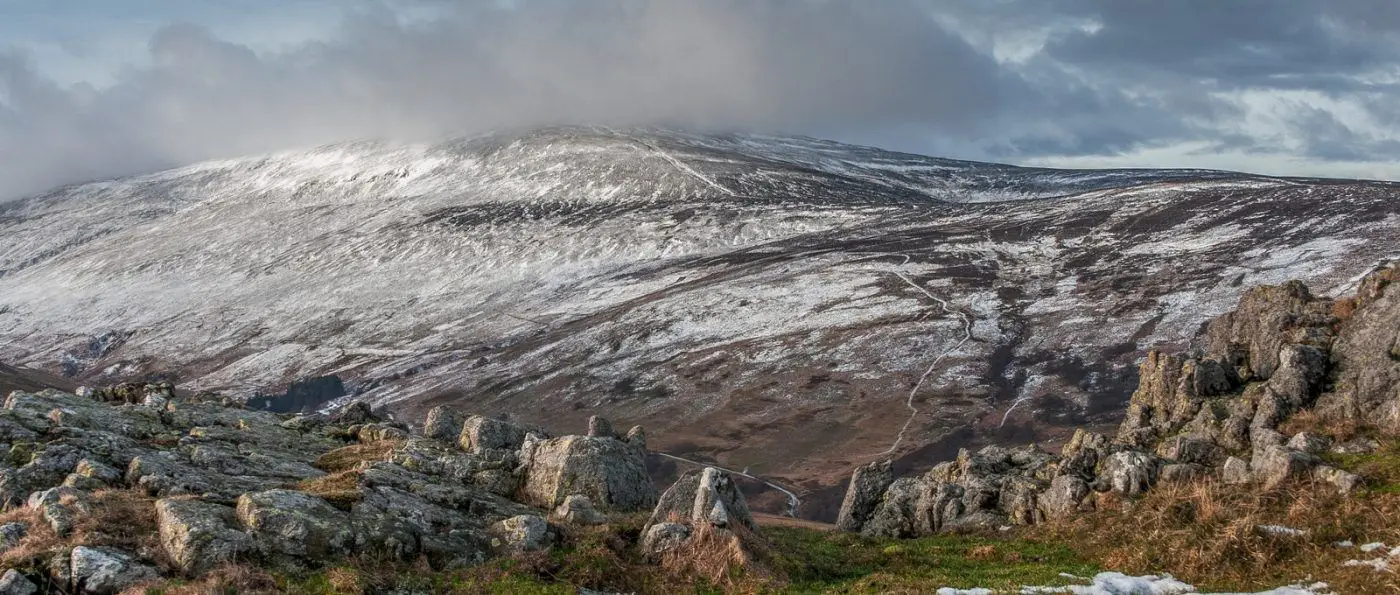The Cheviot Hills, located on the border between England and Scotland, form a picturesque and rugged landscape that has captivated the hearts of nature enthusiasts, hikers, and history buffs alike. Stretching across Northumberland and the Scottish Borders, these hills are an integral part of the ancient Anglo-Scottish frontier, offering a blend of natural beauty and historical significance.
The Cheviots, as they are commonly known, are a range of rolling hills and heather-covered moors, with the highest peak, also named Cheviot, standing at 2,674 feet (815 meters). The hills are characterized by a unique blend of grassy slopes, wildflowers, and expansive views that make them a haven for outdoor activities. The region is crisscrossed by a network of walking trails and footpaths, inviting visitors to explore its undulating terrain and discover its hidden gems.
One of the notable features of the Cheviot Hills is the Cheviot itself, a majestic peak that dominates the skyline. Climbing to its summit is a rewarding experience, offering panoramic vistas that stretch across both England and Scotland. On a clear day, the North Sea glistens in the distance, and the rolling hills seem to go on forever. The sense of tranquility at the top is unmatched, providing a serene escape from the hustle and bustle of everyday life.
The Cheviot Hills are not just a haven for outdoor enthusiasts; they also harbor a rich tapestry of history and folklore. The hills were once part of the Anglo-Scottish border, a region marked by centuries of conflict and turmoil. Ruined medieval towers and castles, such as those at Otterburn and Harbottle, stand as silent witnesses to the turbulent past of the area. Exploring these historic sites adds a layer of depth to the visitor’s experience, allowing them to connect with the region’s heritage.
The flora and fauna of the Cheviot Hills contribute to the area’s ecological significance. The heather-clad moors are not only visually stunning but also play a crucial role in supporting a diverse range of wildlife. Red grouse, curlews, and golden plovers find sanctuary in this habitat, creating a haven for birdwatchers and nature lovers. The Cheviots also boast a variety of plant species, with rare alpine plants clinging to the rocky outcrops.
In addition to the natural and historical attractions, the Cheviot Hills offer a range of outdoor activities for visitors. Hiking and walking trails cater to all levels of fitness, from gentle strolls through the valleys to challenging hikes up the peaks. The vast network of trails allows visitors to customize their experience, whether it’s a short family outing or a more strenuous adventure for seasoned hikers.
The Cheviot Hills represent a harmonious blend of natural beauty, historical significance, and recreational opportunities. Whether you seek a peaceful retreat in nature, a journey through history, or an exhilarating outdoor adventure, the Cheviots provide an ideal destination. As the wind whispers through the heather and the hills stand as silent sentinels, the Cheviot Hills continue to enchant and inspire all who venture into their timeless embrace.



